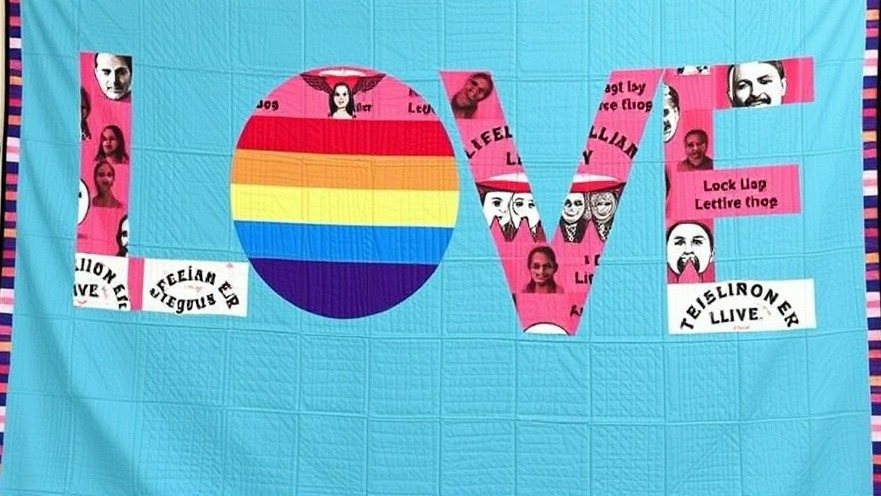
The Power of the Quilt: A Symbol of Transformation and Resistance
The sentiment behind the Freedom to Be quilt encapsulates not only the struggles of the trans community but also their hopes and aspirations for a brighter future. Abdool Corlette, the visionary behind this project, aims to transform 9,000 square feet into a tapestry of love, community, and defiance. With each panel created in collaboration with 258 contributors, the quilt becomes more than just fabric; it serves as a powerful statement—what freedom means to many in a country rife with challenges against their identities.
Understanding the Context: Why This Quilt Matters Right Now
In the current socio-political climate, the unveiling of the Freedom to Be quilt comes at a crucial time. With anti-trans legislation gaining traction, this quilt stands as a beacon of hope amid disheartening news. Corlette’s project provides a counter-narrative against the hostility faced by the trans community, striving to foster joy and resilience despite the surrounding negativity. This act of creation amid adversity is a testament to community strength and the enduring fight for rights and freedoms.
The Journey: From Concept to Creation
The Freedom to Be quilt's conception aligns with the grassroots nature of activism—community voices weaving their narratives together. Corlette's initiative encourages ongoing dialogue, as each panel showcases individual stories that collectively highlight the rich tapestry of trans experiences. Through public displays and events coinciding with WorldPride, the quilt aims to uplift those who might feel isolated, reminding them of their shared journey within a supportive network.
Participation in Artistic Activism: Benefits and Opportunities
Engaging with such artistic expressions fosters community connectivity. Participants in the quilt-making process not only contributed to the tapestry but also engaged in a form of activism. This collaboration cultivates awareness about trans rights and encourages others to recognize the challenges faced by these individuals. Artists and activists alike can draw inspiration from this model, realizing that creativity can be paired effectively with advocacy to bring about social change.
A Look into the Future: The Role of Initiatives Like the Quilt
As the Freedom to Be quilt is unveiled at a time when anti-trans sentiments are ramping up, there is an urgent need for more initiatives like these—ones that combine art with activism. By engaging both the public and the community, such projects can help shift perspectives and create dialogues that lead to positive changes. The quilt could be one of many similar projects that inspire hope and resilience among marginalized groups while promoting awareness and understanding across the broader public.
Embodying Resilience: Community Responses
The response to the quilt has highlighted the communal desire to create a sense of safety and acceptance for trans individuals. As Corlette observed, his personal anxieties about the quilt’s unveiling echo the feelings of many in the community. This quest for acceptance reminds us how important it is for the LGBTQ+ community to foster spaces where they can express their identities freely. The quilt serves as an emotional canvas, bridging people’s narratives through shared creativity and collective resilience.
Conclusion: Join the Movement for Trans Rights
As we reflect on the significance of the Freedom to Be quilt, it serves not only as an artistic endeavor but as a clarion call for acceptance and advocacy. Organizations like ACLU continue to protect the rights of marginalized groups, and public engagement through art can elevate these conversations further. Join us in solidarity for initiatives that nurture our diverse humanity, celebrate freedom, and amplify voices of resilience in the face of oppression.
 Add Row
Add Row  Add
Add 




Write A Comment